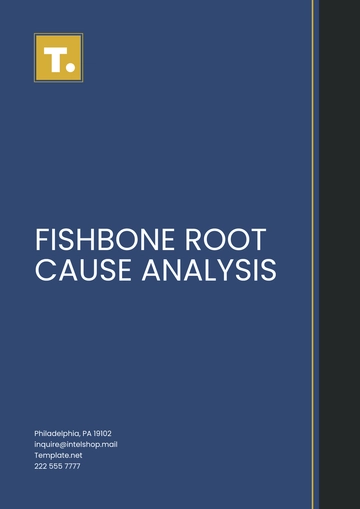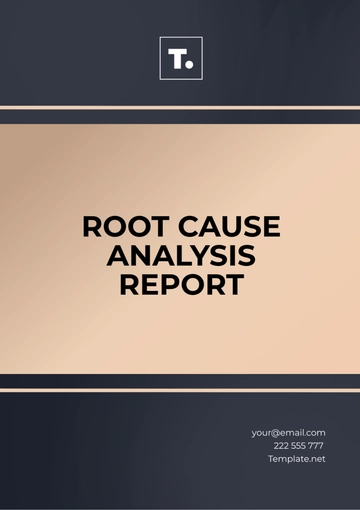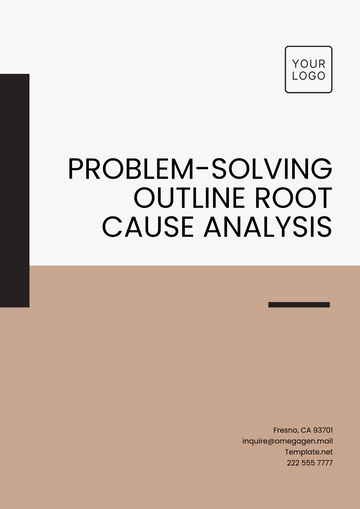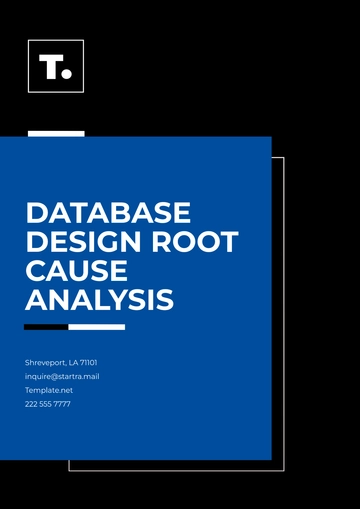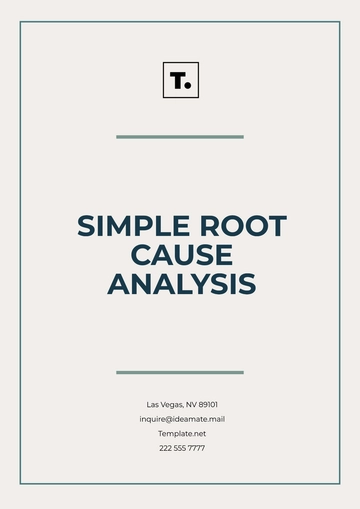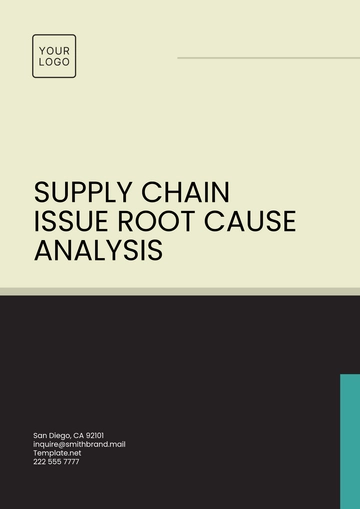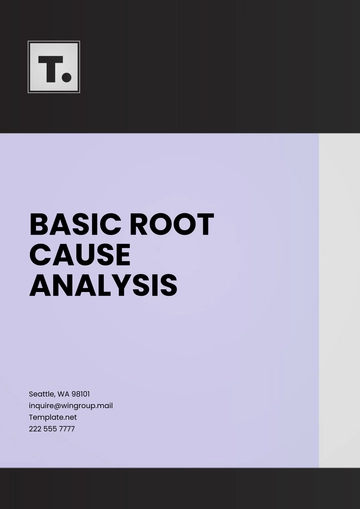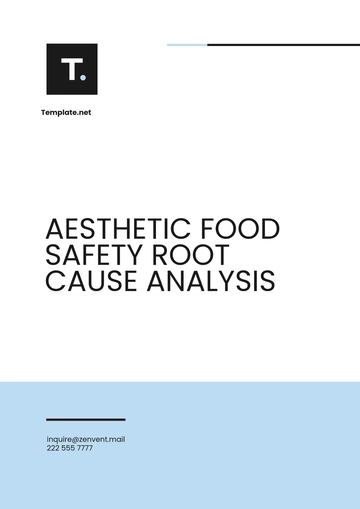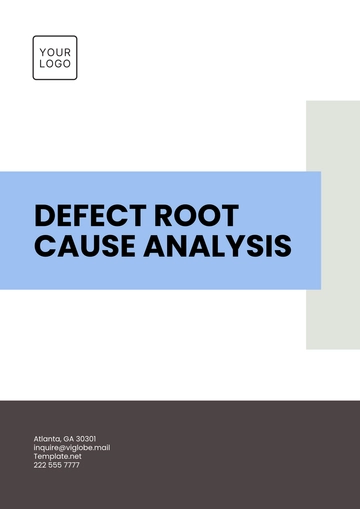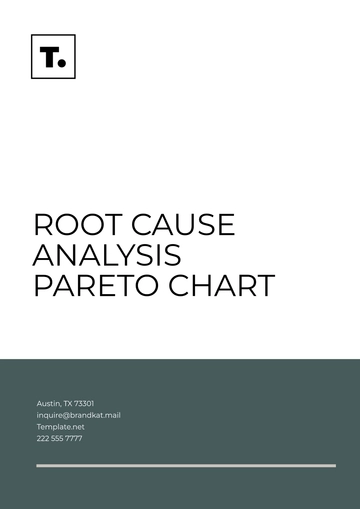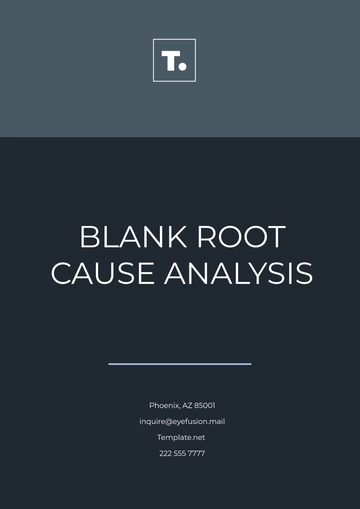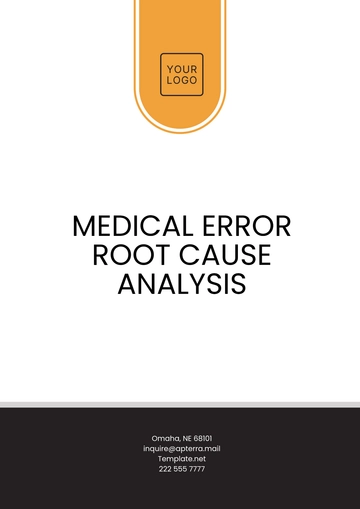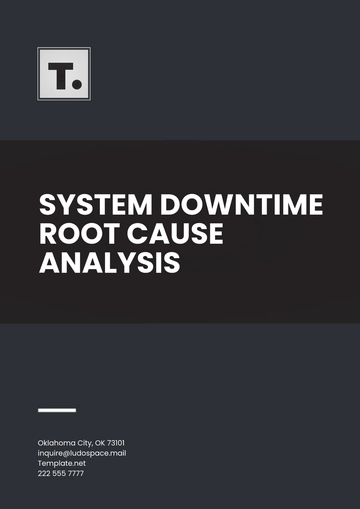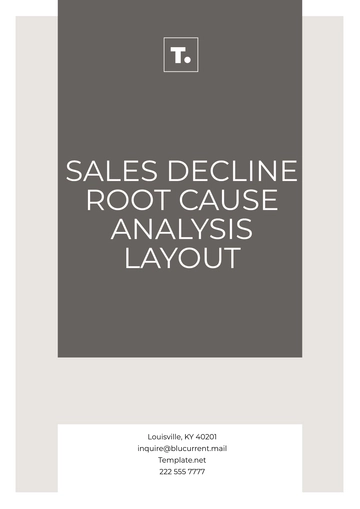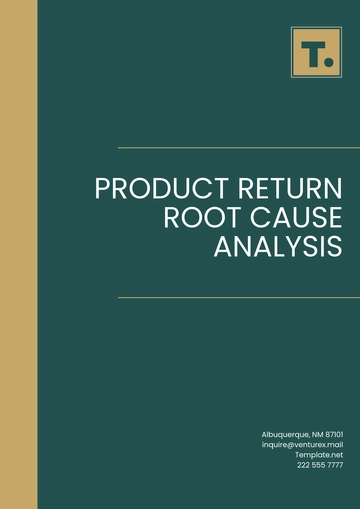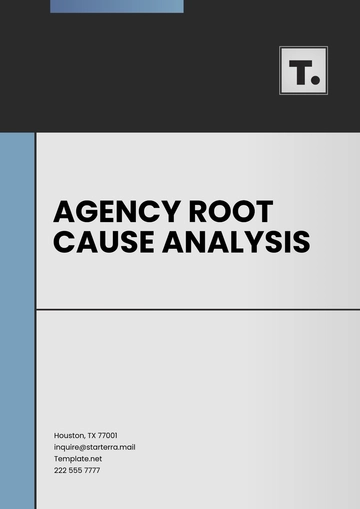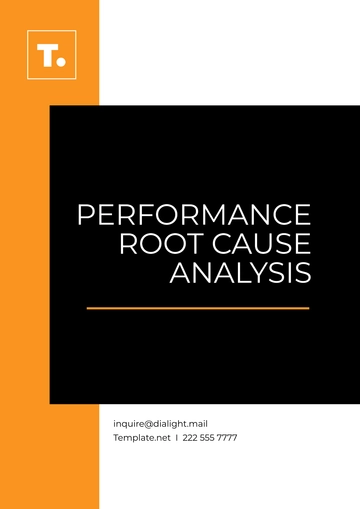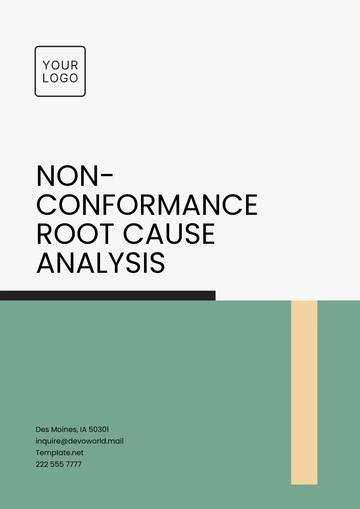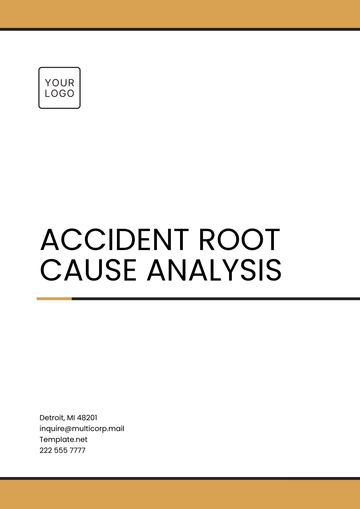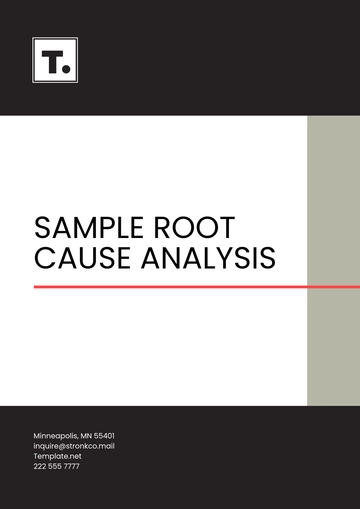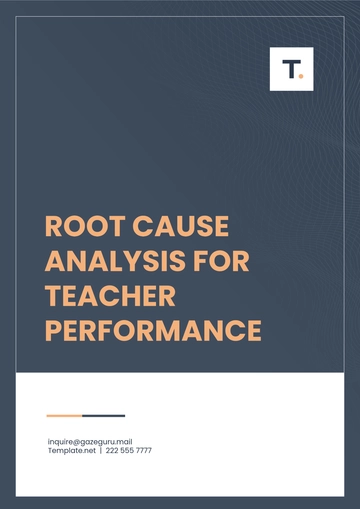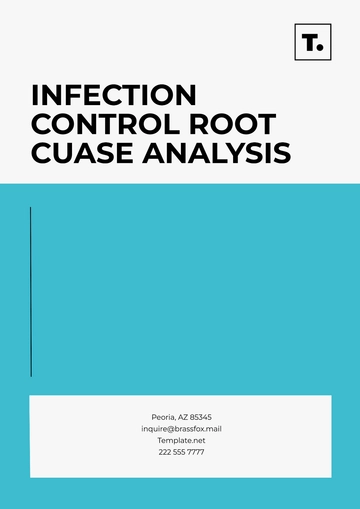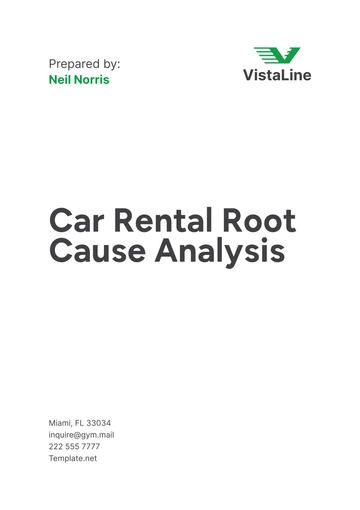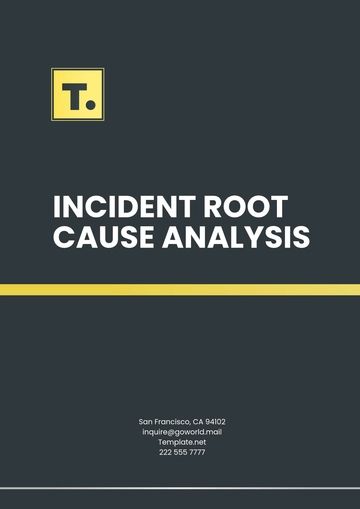Free Agency Root Cause Analysis
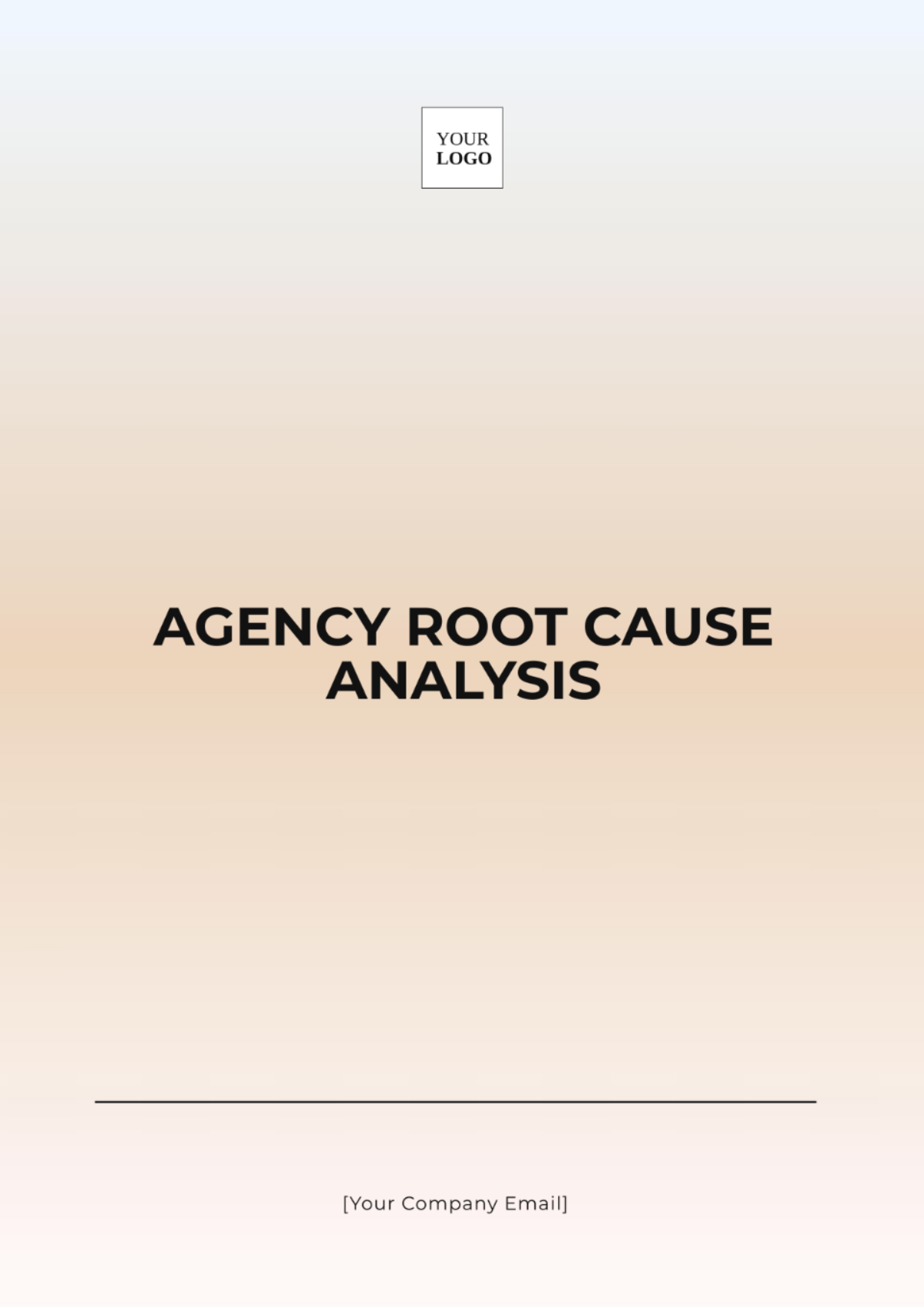
Prepared By: [YOUR NAME]
Date: April 11, 2060
I. Introduction
The purpose of this root cause analysis is to identify and address the underlying issues within our agency that have led to a recent decline in customer satisfaction and operational efficiency. By thoroughly examining the problem, collecting relevant data, and analyzing the root causes, we aim to implement effective solutions to prevent future occurrences and enhance overall performance.
II. Problem Statement
The agency has experienced a 15% decline in customer satisfaction over the last six months, alongside a noticeable decrease in operational efficiency. These issues appear to be interconnected, but the exact causes are not immediately clear. It is crucial to determine the root causes to improve our service quality and operational processes.
III. Data Collection
Data was gathered from various sources to understand the scope and underlying factors of the problem:
Customer Feedback Surveys: Collected customer input on service quality, timeliness, and responsiveness, revealing delays, perceived unresponsiveness, and overall dissatisfaction.
Employee Performance Records: Analyzed productivity, absenteeism, and engagement metrics, uncovering trends of lower productivity and increased absenteeism, suggesting morale or workload issues.
Operational Efficiency Reports: Reviewed internal processes and resource allocation, identifying bottlenecks and inefficiencies that are causing delays and higher costs.
Incident Logs and Complaints: Assessed patterns in incidents and complaints, pointing to frequent service disruptions and unresolved issues, indicating systemic problems.
Interviews with Key Stakeholders: Conducted interviews with leadership and staff, revealing communication gaps, resource constraints, and misaligned priorities as key challenges.
The gathered data was compiled into the following table:
Data Source | Key Insights |
|---|---|
Customer Feedback Surveys |
|
Employee Performance Records |
|
Operational Efficiency Reports |
|
Incident Logs and Complaints |
|
Interviews with Key Stakeholders |
|
IV. Analysis
Upon examining the collected data, the following root causes were identified:
Communication Breakdown: Ineffective communication channels between departments lead to misalignment and delayed responses.
Insufficient Training: Employees lack the necessary skills and knowledge to efficiently handle their tasks, resulting in errors and delays.
Resource Constraints: Limited resources, including staff and tools, are insufficient to meet the current demand, causing service bottlenecks.
Process Inefficiencies: Outdated and cumbersome processes that hinder swift service delivery and resolution of issues.
V. Findings
The analysis identified the following root causes contributing to the decline in customer satisfaction and operational efficiency:
Communication Breakdown: Ineffective communication channels and lack of coordination between departments have led to misalignment, delayed responses, and inconsistent service delivery.
Insufficient Training: Inadequate training programs have resulted in employees lacking the necessary skills and knowledge, leading to frequent errors, reduced productivity, and poor customer interactions.
Resource Constraints: Insufficient staffing and outdated tools have strained the agency's capacity to meet demand, causing bottlenecks, delayed services, and increased employee stress.
Process Inefficiencies: Outdated, complex, and rigid processes have hindered workflow efficiency, leading to delays, increased operational costs, and a failure to quickly resolve customer issues.
VI. Recommendations
A. Strengthen Communication Channels
Cross-Departmental Platforms: Implement integrated tools for real-time information sharing and collaboration across teams.
Regular Inter-Departmental Meetings: Schedule routine meetings to align teams, clarify roles, and address emerging issues quickly.
B. Elevate Employee Training Programs
Comprehensive Training Modules: Develop in-depth training for new hires and ongoing staff, focusing on essential skills and service excellence.
Skill-Enhancement Workshops: Conduct regular workshops to keep employees updated on industry trends and technologies.
C. Optimize Resource Allocation
Reevaluate Resource Distribution: Analyze and adjust resources to meet demand, ensuring sufficient staffing and tool availability.
Invest in Staffing and Technology: Increase investment in skilled personnel and modern tools to boost efficiency and service delivery.
D. Streamline and Modernize Processes
Review and Revamp Processes: Audit and update workflows to eliminate inefficiencies and enhance responsiveness.
Implement Automation: Utilizing automation technologies can significantly boost task efficiency, reduce error rates, and speed up service delivery processes.
VII. Conclusion
This root cause analysis has identified key factors contributing to the decline in customer satisfaction and operational efficiency within the agency. By addressing these root causes through improved communication, enhanced training, better resource allocation, and streamlined processes, we can effectively mitigate these issues. The next steps include the implementation of the proposed recommendations and ongoing monitoring to ensure continuous improvement.
- 100% Customizable, free editor
- Access 1 Million+ Templates, photo’s & graphics
- Download or share as a template
- Click and replace photos, graphics, text, backgrounds
- Resize, crop, AI write & more
- Access advanced editor
Identify underlying issues with Template.net's Agency Root Cause Analysis Template. Fully customizable and editable, this template is designed to help agencies pinpoint and address the root causes of operational challenges. Editable in our Ai Editor Tool, it provides a systematic approach to problem-solving, ensuring that your agency can implement effective solutions. Ideal for continuous improvement initiatives
